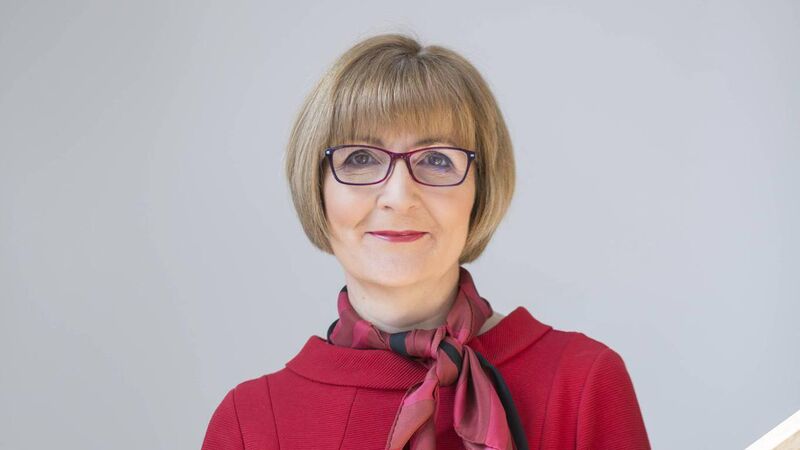Are we asking the right questions about gender equality in higher education?

Maggie Cusack, President of Munster Technological University.
In Ireland for the first time, after 429 years, the male dominance of the Presidency of Irish public universities has been shattered. Women have been appointed to head up four of the 10 public universities (University of Limerick — Prof Kerstin Mey; Munster Technological University, Prof Maggie Cusack; Maynooth University, Prof Eeva Leoinen; and one of the three women in contention in Trinity College Dublin).
So 40% of the heads of universities in Ireland will be women as compared with an EU average of 14%. This will help break the equation between masculinity and power — but will these women be able to make a difference to women’s under-representation at professorial level?
Progress to date in this area has been steady but slow: increasing from 19% in 2013-15 to 26% in 2019 (marginally above the EU average of 24%).
But women’s ‘chances’ of a professorship in Irish universities are still only 1:13 as compared with a 1:5 ‘chance’ for men. Women’s ‘chances’ vary between universities (from 1:24 to 1:9) and they vary over time. If the crucial thing was the fact that women bear children; have maternity leave; are less confident; less politically astute etc this variation should not exist. The fact that it does exist suggests that the crucial factor is the organisation rather than the women.
A new era started when Micheline Sheehy Skeffington won her gender discrimination case against NUI Galway in 2014 and was awarded €70,000 which she gave to the five other women who had been shortlisted but not promoted there in 2008-09. Settlements were reached between all five of these women and NUI Galway by 2018.
There have been a number of initiatives since then. Athena SWAN, a gender equality mark for higher education institutions, was introduced in 2015 and having it is now essential to compete for research funding.

The Expert Review on Gender Equality in Irish Higher Education Institutions was undertaken by the HEA in 2016. It included an online survey of just under 5,000 people which highlighted a misogynistic old boys’ culture. Its recommendations included a quota of 40% of those at professorial level being women by 2024 and the linking of state funding to the gender profile of two senior positions. The Task Force Report in 2018 reiterated these recommendations.
A Senior Leadership initiative was introduced in 2019. It created 45 senior positions in areas where women were under-represented. More recently there have been initiatives to deal with sexual harassment.
But men’s ‘chances’ of a professorship have not changed over time (1:5 since 2013-15) and they vary little between universities (1:4 to 1:7). In some cases, they have actually improved since 2013.
The structure and culture of universities are effectively designed by men for men. They continue to value male-dominated staff areas (e.g. engineering and ICT) more than female-dominated ones (e.g nursing and midwifery). One reflection of this is that there are more professorial posts in male-dominated areas ‘in the national interest’, frequently aided by Science Foundation Ireland.
The criteria for recruitment and promotion in universities officially includes teaching, research and service — but in practice research is prioritised. Men are likely to produce more publications; have higher citations and more research funding — at least partly because they are men in male-dominated institutions.
Recruitment practices frequently lack transparency (not only in Ireland but in Denmark, Netherlands etc). Predominantly male boards increase men’s ‘chances’ of a professorship.
Both men and women when given identical CVs — one with a man’s name and one with a woman’s name — favoured the one with the man’s name - and at a higher salary.
Women are seen as more suited to teaching and administration and this is reflected in workload models. These activities are essential — but are undervalued in promotional competitions.
Change is possible. In Trinity College Dublin the percentage of women in the professoriate was, with NUI Galway, the lowest at 14% in 2013. Now at 31%, Trinity College Dublin has been the fastest to change. Change is neither inevitable nor irreversible. In the University of Limerick, 34% of those at professorial level were women in 2012. It has declined since then.
The initiatives taken since 2014 have improved women’s ‘chances’, but men’s ‘chances’ have remained more than twice as high. Maybe we are not asking the right question? Maybe we should be asking about men’s privileging rather than women’s under-representation?
Will the four women appointed at Presidential level be able and willing to tackle this problem of male privileging? Will they be supported by their male colleagues in doing this? By the Higher Educational Authority, the systemic infrastructure and the new Department of Further and Higher Education, Research, Innovation and Science? Maybe these are the right questions.
Prof Pat O’Connor, Professor Emeritus, Sociology and Social Policy, University of Limerick, and Visiting Professor, Geary Institute, Dublin.













